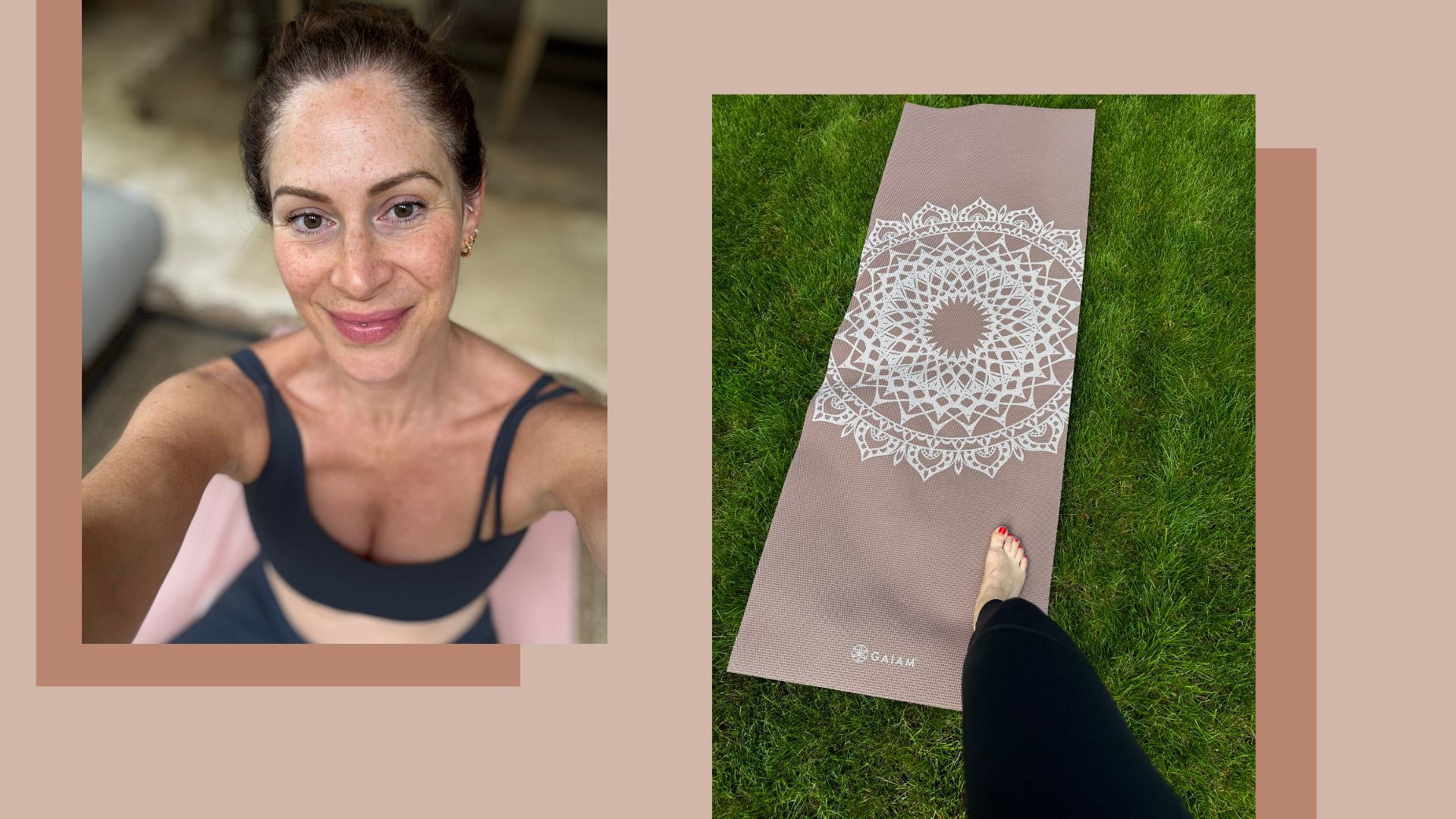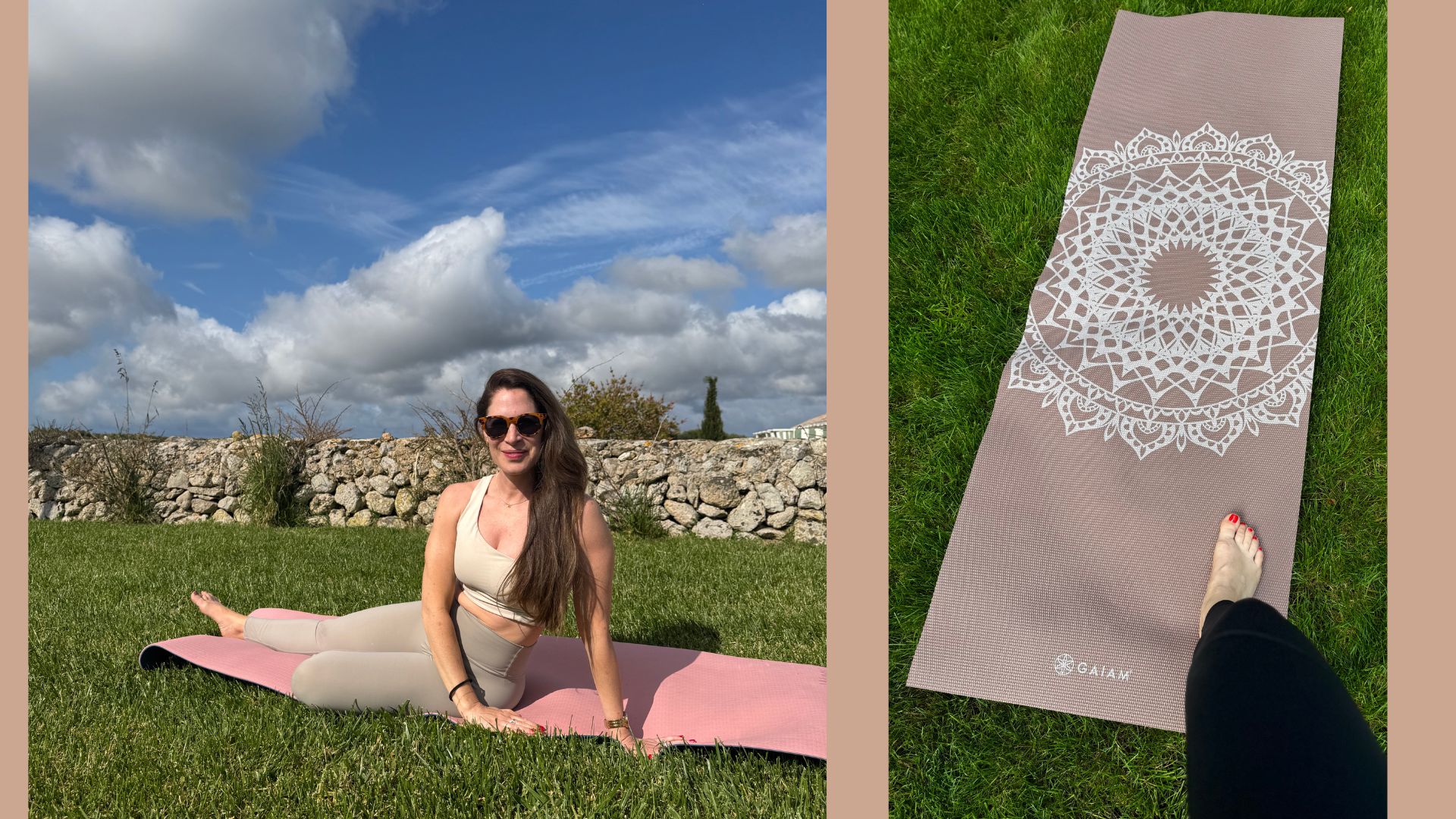
Until I started teetering on the edge of perimenopause almost six years ago, I was firmly a member of the go hard or go home workout crew. If I wasn’t dripping with sweat, spent and shaking at the end of my class, I didn’t want to know.
But suddenly, seemingly overnight, my body had other ideas. I’d once raced full-throttle into any given workout from GRIT (like HIIT, but harder, if you can comprehend it) to running, spin and more, my sweat sessions just weren’t hitting the same. I was struggling for breath, feeling anxious and panicky, and even (on occasion) had to admit defeat: something I would previously have never dreamed of.
Yet, I knew my strength and fitness were as good as ever. As I dug deeper, my suspicions were confirmed. I was experiencing classic perimenopause symptoms. A cocktail of raised cortisol (hello, snappy moods and brain fog) combined with poorer sleep quality and blood sugar instability was making me stressed, low on energy, and prone to aches and pains.
“Hormonal shifts during perimenopause, particularly the decline in oestrogen, can lead to increased fatigue, joint pain, broken sleep, and a slower recovery rate,” explains women’s health expert and personal trainer, Edwina Jenner. “These changes mean that your body may not tolerate the stress of high-intensity workouts as it once did. What used to be energising may now feel draining or even cause injury.”
So, where did that leave me? Well, luckily, I fell in love with beginner Pilates at exactly the same time as falling out of love with my beloved HIIT. Whether this was pure coincidence or cosmic karma, Pilates in perimenopause proved a lifeline for my body and mind. The benefits of Pilates at any stage of life are myriad (think better posture, improved core strength, enhanced flexibility and mobility), but in perimenopause (and menopause itself), Pilates comes into its own.
The benefits of Pilates in perimenopause
1. It's still a full-body burn
“Low-impact workouts like barre or Pilates are brilliant options in perimenopause,” explains Jennie Brown, trainer and founder of Meet You At The Barre. "They are kind to joints, and help build strength, mobility and core control functionally.”
Pilates sceptics, listen up: mistake low impact for low intensity at your peril. Previously, I thought the only way to feel I’d had a ‘proper’ workout was to push my body to exhaustion. But Pilates builds the burn in a slower (but no less intense!) way.
My reformer Pilates classes are intense in the best way, so I don’t even miss the burn of HIIT. You’ll know what I mean if you’ve experienced the infamous Pilates shake.

2. Pilates build muscle mass and preserves bone density
The hormonal changes that occur during perimenopause can leave us susceptible to reduced bone density (osteopenia) and muscle mass (sarcopenia) as women, increasing our risk of injury if we fall. But (you’ve guessed it!) Pilates is the perfect, sustainable way to build lean muscle mass and offset the risk of osteopenia, too.
Research by the University of Exeter shows that resistance training, which includes Pilates with weights, is beneficial at all stages of menopause.
“Sarcopenia, low bone density, and rising body fat levels are feared hallmarks of perimenopause,” says Kate Taylor, sports therapist and trainer at HOOKE Fitness. “With the right stimulus (exercise), these can be avoided. Pilates is a lovely way to nourish the body through movement, and you can absolutely still build muscle and support your bones with lower-impact exercise. The key here is to take the muscles to near-fatigue, as the body needs sufficient stress to adapt - known as hormesis."
3. Pilates encourages mindful movement
Managing perimenopause, for me, has been as much about calming my mind as it has been dealing with the physical symptoms. Pilates has played a huge part in teaching me to engage with my nervous system, using my breath to deepen the moves and still my racing brain.
While I’m not yet at the stage where I’m considering hormonal medication (HRT), although this is something I'm entirely open to, I know that lowering my stress levels will help keep my hormones happier.
“Swapping HIIT for Pilates during perimenopause can be a game-changer,” agrees Kate Rowe-Ham, a personal trainer, strength specialist, and founder of Owning Your Menopause. “Pilates focuses on core strength, alignment, balance, breath control, and stability, all of which support your nervous system and hormonal health.”
4. Pilates in perimenopause helps cultivate a sense of control
Let’s face it, our lives can feel increasingly out of control in midlife. From raising teens and caring for ageing parents to the rollercoaster of menopausal hormones, it’s easy to find ourselves overwhelmed, frazzled, and in need of a nervous system reset.
Pilates does just that. Since practicing regularly, I’ve felt calmer and more like myself again.
“Regular exercise helps to steady the ship during perimenopause,” says Brown. “It not only supports bone health, preserves muscle (which we naturally start to lose), and helps manage weight, it also boosts your mood, and helps with stress levels and sleep. Most importantly, it gives you back a sense of control when everything else can feel a bit out of whack.”
5. Pilates improves pelvic floor function
Last, but certainly not least, one of the reasons I first turned to the practice was to rehab my pelvic floor post-childbirth. Perimenopause is also a time when we’re likely to experience urinary issues.
“During perimenopause (which can last up to 10 years), oestrogen and progesterone levels drop,” explains Anna Woolley, pelvic health physiotherapist at Core LDN. “These hormones, produced by your ovaries, are critical for pelvic floor function. Their decline can cause thinning, weakening, and reduced elasticity of these muscles, impacting bladder, bowel, and sexual function."
But there is some good news: Pilates in perimenopause can be effective in helping us to strengthen our pelvic floor, and it has absolutely taught me to tune into my pelvic floor function. A good Pilates teacher will teach you how to activate your pelvic floor correctly and perform Pilates exercises (like pelvic tilts) using these muscles to stabilise the core.
“This dual focus means that while doing Pilates, clients are simultaneously strengthening their pelvic floor,” says Woolley. “Additionally, the pelvic floor works in conjunction with muscles like the glutes, inner thighs, and abdominals, so strengthening these with Pilates also helps enhance pelvic floor strength."

Why is movement essential in menopause?
It was clear that I needed to change my workout routine, but menopause is no time to be ditching exercise. While research into the benefits of Pilates in perimenopause specifically is limited, it’s well established that movement is medicine.
As well as the obvious benefits of strength training for reducing muscle and bone loss in menopause, studies show that weight-bearing exercises reduce the severity of menopause symptoms, including hot flushes, according to a review in the Menopause Journal.
In fact, Rowe-Ham goes as far as to say that building muscle is the "insurance policy for midlife" and beyond. “Strength training is one of the best things you can do for metabolism, bone density, and mental wellbeing," she says. "Sleep, stress management, and nutrition matter more than ever, too. Movement is just one piece of the puzzle. Perimenopause is the time to start future-proofing your body."
Should you stop doing HIIT in perimenopause?
All this being said, if you’re deep in the perimenopause trenches and HIIT is serving you well, then don’t let this put you off. "We don’t necessarily have to cut HIIT out entirely, but we do need to be more discerning about our movement in perimenopause," says Rowe-Ham.
"HIIT has its place, but it might be time to scale back if you’re feeling more wired than energised, struggling with recovery, or finding it hard to sleep. It’s not about removing it altogether; it’s about moderation and timing," she explains.
Thankfully, armed with the right knowledge, I’ve found my way back to incorporating short HIIT sessions that work for my body into a well-balanced, weekly routine of exercise, so I’m still getting my sweat on and basking in those fabulous endorphins, without the cortisol hangover. That said, if I’m having a particularly busy or stressful week, I have no qualms about ditching it for a Pilates workout at home until I’m feeling better again.
“Some women find doing HIIT once a week, alongside other forms of movement, works brilliantly," says Rowe-Ham. “Others, like you, feel far better swapping it out entirely for a while, and that’s okay. You must listen to your body. What works for someone else might not work for others.”
And that’s great advice to live by, no matter what stage of life you’re in.







